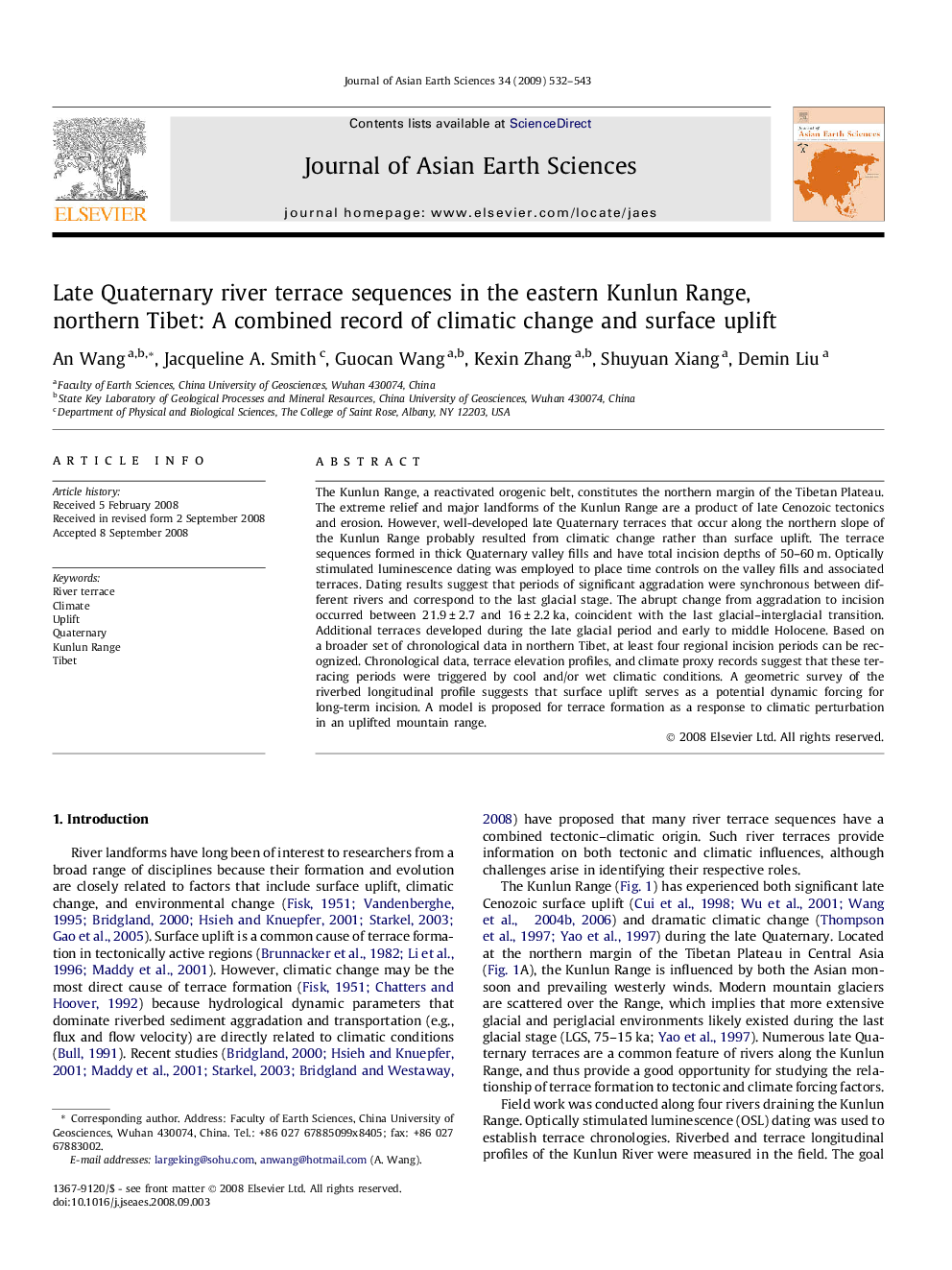| Article ID | Journal | Published Year | Pages | File Type |
|---|---|---|---|---|
| 4732392 | Journal of Asian Earth Sciences | 2009 | 12 Pages |
The Kunlun Range, a reactivated orogenic belt, constitutes the northern margin of the Tibetan Plateau. The extreme relief and major landforms of the Kunlun Range are a product of late Cenozoic tectonics and erosion. However, well-developed late Quaternary terraces that occur along the northern slope of the Kunlun Range probably resulted from climatic change rather than surface uplift. The terrace sequences formed in thick Quaternary valley fills and have total incision depths of 50–60 m. Optically stimulated luminescence dating was employed to place time controls on the valley fills and associated terraces. Dating results suggest that periods of significant aggradation were synchronous between different rivers and correspond to the last glacial stage. The abrupt change from aggradation to incision occurred between 21.9 ± 2.7 and 16 ± 2.2 ka, coincident with the last glacial–interglacial transition. Additional terraces developed during the late glacial period and early to middle Holocene. Based on a broader set of chronological data in northern Tibet, at least four regional incision periods can be recognized. Chronological data, terrace elevation profiles, and climate proxy records suggest that these terracing periods were triggered by cool and/or wet climatic conditions. A geometric survey of the riverbed longitudinal profile suggests that surface uplift serves as a potential dynamic forcing for long-term incision. A model is proposed for terrace formation as a response to climatic perturbation in an uplifted mountain range.
